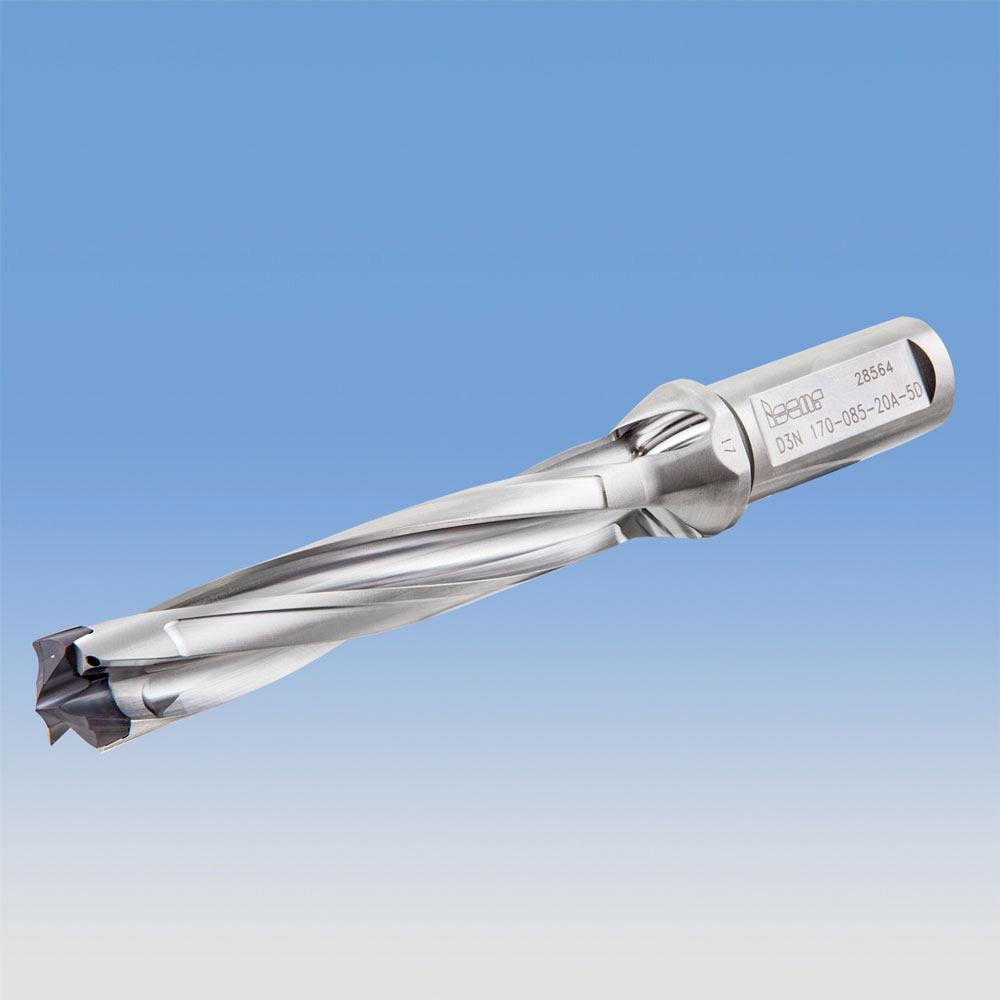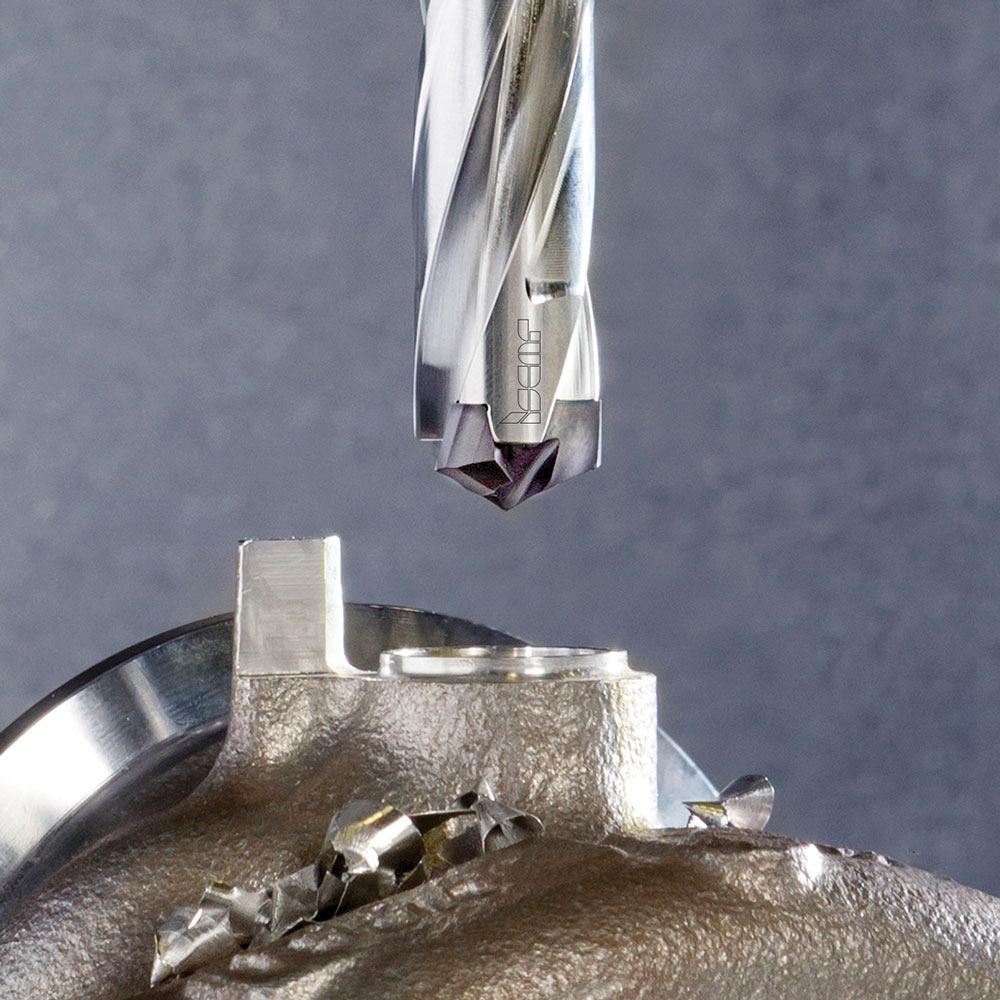Technical Advisor
- FMA
- The Fabricator
- FABTECH
- Canadian Metalworking
Technology Spotlight: Drilling Tools
Exchangeable-head, three-flute drills increase metal removal rates
- By Andrei Petrilin
- May 14, 2020
- Article
- Cutting Tools
Iscar has launched the LOGIQ families of cutting tools targeted to address challenges in metalworking, such as increasing efficiency, reducing machining vibrations, and especially increasing productivity in drilling.
Although a traditional approach, based solely on advanced cutting geometry and progressive tool materials, can result in some improvements in productivity, it is still far from a dramatic change. A significant breakthrough calls for another concept.
The LOGIQ3CHAM family of drills with exchangeable heads is an option to meet this challenge (see Figure 1).
The drills have heads with three flutes instead of two, which is the standard number in a drill design. As a result, machining cycle times can be reduced by up to 50 per cent when compared to conventional two-flute drills.
The idea looks logical and simple: more flutes equal higher feed speed, which leads to improved productivity. However, a translation of this idea into action is not as easy as it may seem. Engineers had to solve several complex problems to design a robust and reliable three-flute drill.
Higher Cutting Forces
An increase in metal removal rates leads to a subsequent growth in cutting forces. The drill’s chisel point must be able to withstand high cutting forces. To help ensure a stable drilling process, the drill should provide good centring and a smooth penetration into the material.
When compared to a two-flute drill, a three-flute drill of the same nominal diameter results in a smaller flute area for chip evacuation (see Figure 2). Therefore, another important design requirement for the new drill is to enable efficient chip formation and unconstrained chip flow.
Reduce Non-productive Time
An additional way to improve productivity is to decrease non-productive machine time. This can be achieved by significantly reducing the time lost in replacing a worn drill. The cutting element of the drill is a three-flute, exchangeable-head H3P, made from cemented carbide, a development intended to reduce non-productive machine time.
The head, which has a durable, precise chisel point combined with an appropriate gash angle, can handle a heavy cutting load. Iscar’s latest R&D projects for two-flute drills created an unusual concave cutting edge shape. The resemblance of the shape to a pagoda profile even generated the shop-talk term a pagoda edge. The concave cutting edges result in smooth and stable drilling. Following the logic of this successful design, the pagoda shape was integrated into the new three-flute head.
In these drills the concave shape of the head edge helps create an optimal chip form and makes the chip evacuation process easier. In addition, the 15-degree corner chamfer improves wear resistance and strengthens the head’s cutting corner. A dovetail clamping design prevents the head from being extracted from its pocket in a drill body during retraction.
Replacing Heads
The head clamping method, which provides face contact between a head and a drill body, reduces setup time.
The head pocket enables a large face contact surface, which spreads out the pressure during machining. The pocket is designed to prevent plastic deformation and increase heat resistance, prolonging pocket tool life even in difficult conditions.
With this design, replacing a worn head does not require any additional setup procedure and may be done when a drill is mounted in a machine tool spindle. This capability decreases the non-productive time component in cycle time.
The tool’s drill body also has some new features. In designing the drill body, tool engineers faced some difficulties caused by the three-flute concept.
The growth in metal removal rate necessitated a proportionate increase in flute volume to ensure an unconstrained chip flow. However, this was shown to reduce body strength and stiffness when compared with a two-flute design of the same diameter, and therefore a non-standard answer was required.
Finite element modelling assisted in identifying a solution: a variable flute helix angle, which provides a durable body structure to resist a high axial load and improve the body’s dynamic rigidity. A helical margin prevents chip adhesion between the body and the drilled hole.
The pagoda-shaped cutting edge, head clamping method, and specially designed drill body can enable high-performance drilling in a diameter range of 0.472 to 1.02 in. (see Figure 3).
Andrei Petrilin is technical manager for Iscar, 2100 Bristol Circle, Oakville, Ont. L6H 5R3, 905-829-9000, www.iscar.ca.
About the Author
Andrei Petrilin
2100 Bristol Circle
Oakville, L6H 5R3 Canada
905-829-9000
Related Companies
subscribe now


Keep up to date with the latest news, events, and technology for all things metal from our pair of monthly magazines written specifically for Canadian manufacturers!
Start Your Free Subscription- Video Showcase
- Industry Events
Automate 2024
- May 6 - 9, 2024
- Chicago, IL
ANCA Open House
- May 7 - 8, 2024
- Wixom, MI
17th annual Joint Open House
- May 8 - 9, 2024
- Oakville and Mississauga, ON Canada
MME Saskatoon
- May 28, 2024
- Saskatoon, SK Canada
CME's Health & Safety Symposium for Manufacturers
- May 29, 2024
- Mississauga, ON Canada























